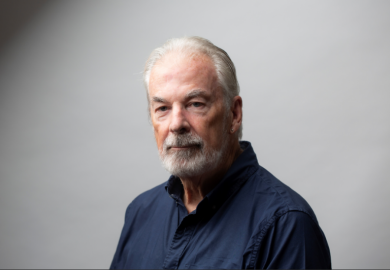In 1871, the pioneering anthropologist E. B. Tylor opened Primitive Culture with a famous definition of culture as "that complex whole which includes knowledge, belief, art, morals, law, custom". Including the three chapters on mythology, religion occupied 11 of his 19 chapters. Yet religion is still but a part of culture, and Tylor aimed to explain religion by explaining culture. Furthermore, the religion considered was "primitive." Religion in modern culture is far less important.
How has the understanding of religion vis-à-vis culture changed in the past 130 years? According to Malory Nye, editor of this lively new journal, the question today is the relationship between culture and religion, as if the two were independent entities. "Culture", once the preserve of anthropology, has been poached by cultural studies. Any rigid, let alone tendentious, divide between "primitive" and "modern" is considered egregiously ethnocentric and has been relegated to the margins by the "postmodern". Generalisations about "culture" or "religion" are dismissed as hopelessly modernist. Most of all, the very concepts stand challenged.
In his inaugural editorial, Nye, an anthropologist teaching in Stirling University's department of religious studies, hopes that anthropologists will look anew at religion. He also hopes that various postmodernist topics such as post-colonialism, the body, agency and power, will be examined. Do the initial three issues of the journal fulfil these hopes?
The first essay, by distinguished anthropologist Talad Asad, faults contemporary conceptions of "agency" for deeming agency an act of triumph over the social world and for regarding pain as a threat to agency. Citing contrary examples such as early Christian martyrs, he argues that pain can be made part of agency and can be embraced as a virtue.
For all Asad's self-importance, his approach is not so different from Tylor's. Both use religion as a case of culture. Tylor no less than Asad is attentive to ethnographic examples that undermine existing definitions. Tylor prides himself on his comparativism and disparages rivals for their limited sampling and even their ethnocentrism. And the heart of religion for Tylor is, as for Asad, agency and power: the power of gods to control the world, albeit the physical rather than the social world. The key difference is that Tylor, having settled on a definition of religion, proceeds to account for the phenomenon, whereas Asad focuses only on the definition of agency.
Many other articles in the journal similarly assail the definition, or even the legitimacy, of familiar concepts. For example, a review symposium on Russell McCutcheon's provocative Manufacturing Religion is devoted to the suitability of the category "religion". Yet not all of the articles are so radical. Some assume standard definitions of standard categories. For example, only two of the four articles on "pilgrimage" question the category. The best tether theoretical challenges to old-fashioned ethnographic detail. All the articles subsume religion under culture.
In seeking to restore to anthropological prominence the centrality that religion once had, Culture and Religion is serving an admirable function and is off to an impressive start.
Robert A. Segal is professor of theories of religion, University of Lancaster.
Culture and Religion
Editor - Malory Nye
ISBN - ISSN 0143 8301; Online ISSN 1475 5629
Publisher - Routledge
Price - Individuals £25.00; Institutions £80.00
Pages - - (Twice a year)
Register to continue
Why register?
- Registration is free and only takes a moment
- Once registered, you can read 3 articles a month
- Sign up for our newsletter
Subscribe
Or subscribe for unlimited access to:
- Unlimited access to news, views, insights & reviews
- Digital editions
- Digital access to THE’s university and college rankings analysis
Already registered or a current subscriber?



